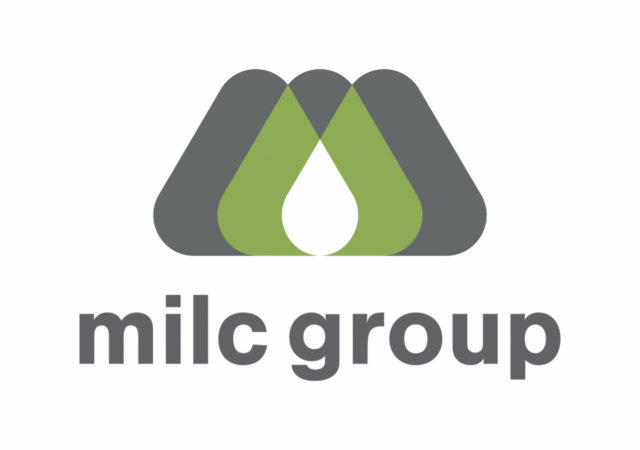The new margin protection insurance program (MPP) for dairy farmers, which was developed by the National Milk Producers Federation (NMPF) and enacted in the 2014 Farm Bill, was formally unveiled Aug. 28 by Agriculture Secretary Tom Vilsack.
NMPF said it is pleased with the overall provisions of the new program, and urged farmers to begin familiarizing themselves with what will be a “valuable tool” to help manage farms’ financial risks in the future.
“Today’s release of the new dairy program’s details is the culmination of five years of work by NMPF, the nation’s dairy cooperatives and other farm groups to create an important new safety net for dairy farmers,” said Jim Mulhern, President and CEO of NMPF.
“We applaud the U.S. Department of Agriculture on its hard work during the past six months putting the final touches on the dairy provisions of Congress’s Farm Bill. While some of the issues we raised could not be fully resolved in the short time available to complete the rulemaking, we’re pleased with the final package."
Mulhern said NMPF will be working in the coming weeks to help dairy farmers understand the importance of the new safety net program. He said the organization is updating its www.futurefordairy.com website with relevant information for farmers, including a spreadsheet of historical margin trends, and an online calculator that will allow farmers to enter pricing and production data to help them select insurance coverage levels in the future.
Every farm producing milk commercially is eligible to sign up for the new program.
USDA said producers can sign up at their local Farm Service Agency offices starting on Sept. 2, and the sign-up period will run through Nov. 28. This 13-week period will allow farmers to register for coverage for the last four months of calendar year 2014, as well as for the entire year of 2015.
There is a $100 sign-up fee for each calendar year, which qualifies a farmer to receive free, basic margin insurance coverage. Once farmers pay that fee, they are enrolled in the MPP for its duration, through 2017, and must annually pay at least the $100 fee.
The MPP allows farmers to protect the margin between milk prices and feed costs. Producers will insure their margins on a sliding scale, and must decide annually both how much of their milk production to cover (from 25 percent up to 90 percent), and the level of margin they wish to protect.
Basic coverage, at a margin of $4 per hundredweight, is offered at no cost. Above the $4 margin level, coverage is available in 50-cent increments, up to $8 per cwt.
Premiums are fixed for five years, but will be discounted by 25 percent in 2014 and 2015, for annual farm production volumes up to 4 million pounds. Premium rates are higher at production levels above 4 million pounds.
The USDA agreed with NMPF that the lower premiums will apply to the first 4 million pounds of a farm’s enrolled annual milk production, regardless of the farm’s total production. For example, a farm with an annual production history of 8 million pounds that elects to cover 50 percent of its production history would pay the lower rate on all 4 million pounds enrolled in the program.
Farmers will be able to change their coverage (the percentage of milk insured, as well as margin level) on an annual basis, with USDA establishing a 90-day enrollment window of July 1-Sept. 30 each year after 2014.
The MPP’s margin definition is the national all-milk price, minus national average feed costs, computed by a formula NMPF developed using the prices of corn, soybean meal, and alfalfa hay.
Farms in the program will be assigned a production history consisting of their highest milk production in either 2011, 2012 or 2013. A farm’s production history will increase each year after the farm first signs up based on the average growth in national milk production. Any production expansion on an individual farm above the national average cannot be insured.
When the margins announced by the USDA for the consecutive two-month periods of January-February, March-April, May-June, etc., fall below the margin protection level selected by the producer (from $8/cwt. down to $4), the program will pay farmers the difference on one-sixth (or two months’ worth) of their production history at the percentage of coverage they elected to insure.
Premiums must be paid either in full at sign-up, or 25 percent by Feb. 1, with the remaining 75 percent balance to be paid by June 1.
NMPF had urged USDA to provide greater flexibility on producer premium payment, such as through milk check deductions. “While USDA advised us they did not have time to set up such a system for the initial launch of MPP, we will continue to work with the department in an effort to modify this feature for future years,” Mulhern said.
“The new Margin Protection Program is more flexible, comprehensive and equitable than any safety net program dairy farmers have had in the past,” Mulhern said. “It is risk management for the 21st century, and we strongly encourage farmers to invest in using it going forward.”
Also on Aug. 28, the USDA issued the rules for another element of the farm bill’s dairy title design to help farmers: a Dairy Product Donation program through which USDA will purchase consumer-packaged dairy products for food assistance programs during extreme low-margin periods.
“This is a positive step as well,” said Mulhern, “since it will stimulate demand, help dairy farmers when they need it most, and provide additional food to those in need.” PD
—From NMPF news release




